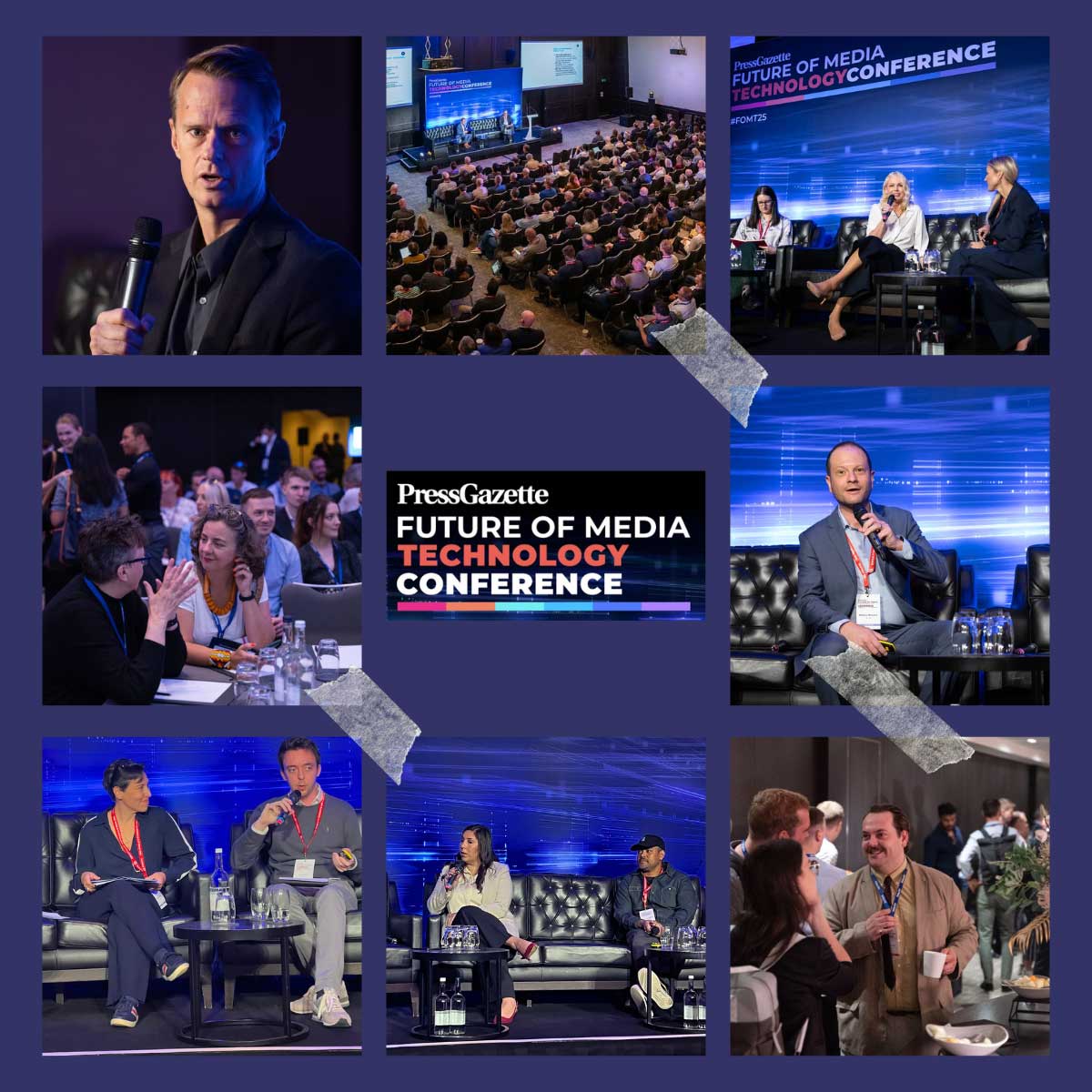AI in the publishing industry: Insights and predictions from Peter Dyllick-Brenzinger, Head of Product and Engineering at Purple
In this interview, Peter Dyllick-Brenzinger, Head of Product and Engineering at Purple, provides insights into his years of working with artificial intelligence and reveals how he uses the technology personally. He talks about the beginnings of AI in the publishing industry, current opportunities for media professionals and the challenges that the change brings with it.
Peter Dyllick-Brenzinger is Head of Product and Engineering at Purple. He has been working with AI professionally for seven years now - and also uses it in his personal everyday life. This interview is all about AI and Peter reveals exciting insights into the opportunities that this technology offers the publishing industry. From the current opportunities and risks of using AI in the publishing sector, to the use of AI in Purple's CMS, to his forecast for the coming years.
AI as a sparring partner and source of ideas in everyday life
Peter, what is your professional background and how did you come to Purple?
Peter Dyllick-Brenzinger: Before joining Purple, I was in charge of product development for the internal CMS at Axel Springer. In my eight years at Axel Springer, I was responsible for many different topics, from apps to bild.de and AI-based assistance systems. I switched to Purple because I have much more impact here with these topics.
What exactly are your tasks at Purple?
Peter Dyllick-Brenzinger: I'm in charge of product development and, together with our software developers and product managers, I'm building Purple into the leading publishing solution. My job is to create an optimal framework for this work: Through a clear, success-oriented product strategy, ideal processes and appreciative personnel development.
AI tools have developed rapidly in the last year. How has this changed your day-to-day work?
Peter Dyllick-Brenzinger: ChatGPT is always open for me. I use the AI as a sparring partner and source of ideas. I usually decide against the suggestions - but then I'm always one step ahead thanks to the input. Where I really wouldn't want to miss it: when creating more complex Excel formulas or SQL queries for our data warehouse. I'm easily ten times faster here than without ChatGPT.
Do you remember when the topic of AI first came up in your day-to-day work and what your personal opinion of it was?
Peter Dyllick-Brenzinger: That was in the fall of 2017, when I took over the Content Intelligence team at Axel Springer. A colleague there had already had initial success with simple machine learning models. We then expanded this further and built lots of small Slack bots that were able to give AI-based recommendations to editorial colleagues. I immediately found this extremely exciting, but it was still very limited. Often enough, we couldn't implement ideas because the technology wasn't quite ready yet. That's different today.
Peter Dyllick-Brenzinger: "One opportunity in the use of AI clearly lies in making work easier"
Where do you see the opportunities and risks of using AI in publishing?
Peter Dyllick-Brenzinger: One opportunity clearly lies in making work easier, which is already possible today. It is important to note that AI never actually works perfectly straight away. You always have to invest a relatively large amount of work until the results are the way you want them. For example, by perfecting so-called prompts (work instructions to AI language models), training models or optimizing integration into work processes. I see risks in the flood of computer-generated texts. Until recently, the production of text was expensive and this meant that people always assigned a value to a text. However, the costs of text production are now approaching zero and the language models are not based on the truth due to technology. As a result, we are confronted with increasing amounts of text that bears no relation to the truth. Of course, this makes real journalism even more important - but it is also a competition.
“A life with AI will be a more comfortable life and one in which you can focus on what you are really interested in — or what creates great value.” Peter Dyllick-Brenzinger
What fascinates you personally most about AI?
Peter Dyllick-Brenzinger: The ability to automate tedious tasks. I believe that a life with AI will be a more comfortable life and one in which you can focus on what really interests you - or what creates great value. This applies to journalism, but also to many other areas of life.
How do you stay "on the ball" when it comes to new technologies?
Peter Dyllick-Brenzinger: I spend a lot of time on X (formerly Twitter) and Bluesky, one of Twitter's competitors. That's where new models or tools are usually written about and discussed first. We also have a lively exchange on the latest developments at Purple.
A look at the competition: What are the challenges Purple is facing?
Peter Dyllick-Brenzinger: With Purple, we started using AI very early on. Our colleagues started our Link Optimizer, which can be used to generate article-to-article links quickly and easily, in 2019. The tool is based on our own deep learning model. Thanks to OpenAI and the GPT APIs, any company can now quickly offer AI functions - which of course means we have more competition. But our experience in this area is a big advantage. Because we know what makes AI integration successful.
What possibilities integrated AI offers in Purple's CMS
How did the Purple Hub come about and what role did AI play? What thoughts were fundamental to its creation?
Peter Dyllick-Brenzinger: AI can only unfold its full power if it is ideally integrated into the work processes. That's why AI was a crucial aspect in the development of the hub from the very beginning. Because our software serves the entire value chain, we can integrate AI wherever it really creates value. Together with our customers, we are constantly testing different ideas.
“Our vision is a one-click article, i.e. an interface in which you can complete all non-creative tasks related to article creation with one click.” Peter Dyllick-Brenzinger
How exactly is AI used in Purple's CMS?
Peter Dyllick-Brenzinger: The range is quite wide - from relatively simple functions such as the automatic tagging of content to Named Entity Recognition, the display of similar articles in your own archive and on the web, through to the Link Optimizer I mentioned earlier, which generates link suggestions for articles and products. We are also constantly developing our GPT integration Purple Prompts. Here we offer a relatively unique prompt management system. We believe that prompts should be managed centrally in an editorial office - and that's what we offer. Our vision is a one-click article, i.e. an interface in which all non-creative tasks relating to article creation can be completed with a single click. For example, the SEO title or keywords.
What do companies need to consider today in order to remain fit for the future?
Peter Dyllick-Brenzinger: It probably sounds a bit hackneyed in 2024, but it's still all about digitalization. The associated change processes within publishing houses should not be underestimated. A digital mindset is absolutely essential today. And that starts, of course, with a digital-first solution like Purple.
When you look at the tools, opportunities and developments that have sprung up in the last year alone, how is it possible not to lose touch?
Peter Dyllick-Brenzinger: Not everything that is possible is also useful. This is obvious in the current glut of AI solutions and features. It's not enough to simply add a ChatGPT button somewhere. AI is sophisticated and because it is always based on probabilities, it also follows different laws than "normal" software. This is often overlooked.
How Purple is shaping the future of publishing
Please take a look into the future: what do you want for the next five years?
Peter Dyllick-Brenzinger: I hope that journalism can return to its roots thanks to AI. "Tell it like it is" and not fill in 20 fields in a tax return form-like CMS. This means higher quality, more critical perspectives on the important issues of our time and, of course, more content about the finer things in life. But at the same time, a democratization of AI - i.e. many small AI models, ideally open source. So that publishers and their partners can benefit significantly from the added value.
Now the realistic view: What are you afraid of?
Peter Dyllick-Brenzinger: AI is currently a centralizing technology. If we are not careful, we will live in a world in which a large part of the added value of knowledge work will end up in the hands of just a few people. In the past, knowledge work was only decentralized - this has changed fundamentally in recent years. What's more, this centralization also poses fundamental challenges for publishers' digital business models. If the AI chat bot becomes the central form of interacting with the world's knowledge, what significance does a publisher still have? How do you still earn money with content in such a world?
What are Purple's plans for the near future? What is the focus on?
Peter Dyllick-Brenzinger: We are continuing to work on integrating AI as smoothly as possible into all stages of value creation. Our goal is to complete stories with just one click.
Purple accompanies publishers on their digital journey. Are you interested in more information about Purple, the AI-based digital publishing platform? Please feel free to contact us.






%201.svg)









.png)

